Development Control Committee - TrustNews Summer 2000
First of all, an up-date of some of the schemes discussed in our last newsletter.
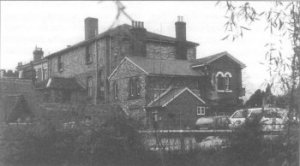
Rear view of listed Mildmay building, Eastgate St,
seen from across the river with the gap on the right
Development on the Eastgate Street site has been on hold since the Mildmay was listed, and at the time of writing we understand that the design of a new scheme which retains this building is nearing completion. The proposed conversion of the Pumping Station, Garnier Road, has been refused as being additional dwellings in an area of countryside beyond the main built-up area of Winchester, which would be undesirably intrusive and for which there is no over-riding justification. It was also considered that the local environment would result in unsatisfactory living conditions due to noise, odour and contamination; that the site was liable to flood and that access visibility and parking would be inadequate. The Woolwich's proposal to move to 29 High Street has also been refused, largely for the reasons discussed in the last newsletter, and they are now moving to 146 High Street, recently vacated by the News Cafe. This is a much more appropriate location, although we feel their proposed shopfront and fascia signs need re-thinking. Members will no doubt have seen in the Hampshire Chronicle that White's Field, Five Bridges Road, has been sold and that its new owner has stated that it will remain as paddock/grazing land. Let us hope this will indeed be the case.

26-27 Staple Gardens, centre of picture,
formerly New Inn
The prevailing astronomical property prices ensure that developers are keeping the Planning Department (and us!) busy. There are currently three proposals for sizeable residential schemes in Winchester being considered, two within the bounds of the old City walls, and one just beyond. At 20 St Peter Street it is proposed to convert the existing house into four flats and to build three flats in front of the house and a courtyard development of four dwellings at the rear, a proposal much more sympathetic and stimulating than the previous scheme put forward for this site. Another proposal is to refurbish and convert to residential use the New Inn, 26-27 Staple Gardens and the best of the buildings in the adjoining Blanchard's Yard, and to build four new dwellings. The external treatment of the existing buildings seems sympathetic, and it is hoped our discussions with the prospective developer will result in new buildings more in sympathy with their surroundings than those originally proposed.
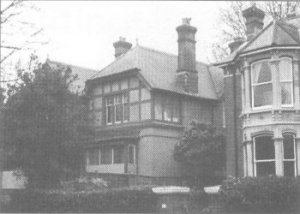
52 St Cross Road, demolition proposed
The largest development outside the City walls is the plot on Hyde Street - being almost the size of the old Marston Brewery site and having considerable problems because of the interesting archaeology beneath. The Trust welcomes housing on the site of Evans Halshaw, for residential rather than garage use must be preferable for the character of this historic street. We were involved in discussions at an early stage, before the application was made, and it is encouraging that the proposed development seems to be aiming to contribute to, rather than just mimic, the character of the immediate neighbourhood. We will be making further comments on this scheme after we have had a presentation of the latest version of the scheme towards the end of May.
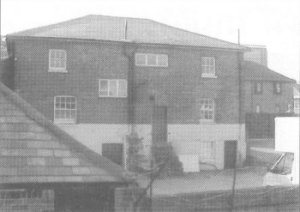
Back of Staple Gardens - Blanchard's Yard
It is good to be able to say that two other schemes of merit have been seen during the past couple of months. At 12 Magdalen Hill, it is proposed that an ingenious and stylish development should replace the existing building on the left of the footpath up to St Giles' Hill. Clever use is made of the sloping site, with parking being provided out of sight under the dwellings. At 8 Lansdowne Avenue, the existing '60s house is to be demolished and replaced by an unusual and imaginative design that should present an imposing and interesting face to the road. It makes a very welcome change to be looking at buildings that have a contemporary design of some panache and we hope this trend will continue.
Sadly, it has not all been good news, and it is depressing to have to report that yet again a large Victorian property in the Christchurch Road conservation area is under threat of demolition. The dilapidated and sad looking house at 52 St Cross Road, opposite the garage, is clearly not in good condition, and was put on the market at a suitable price for a house in need of rehabilitation. Despite its derelict appearance, a builder confirmed it as being viable for reinstatement, and having had an estimate for the work needing to be done, a private individual was prepared to pay over the asking price to turn it into his family home.
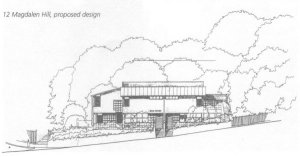
12 Magdalen Hill, proposed design
However, this was not to be, for at the auction the price was pushed way up by two bidders competing to pay considerably more. And, lo and behold, in the fullness of time there was an application to demolish the existing house and replace it with three dwellings. The gardens of these houses would be tiny and very uncharacteristic of this stretch of St Cross Road, and a chestnut tree of great importance to the Edgar Road environment would be put at risk - for who would want a garden totally under the canopy of a large tree, especially if it could be shown as being past its prime and therefore of possible danger in a confined garden? With prices as they are, a tidy profit would of course be made by demolishing one house and building three new ones in its place, and a developer will always have a bigger purse than an individual wanting to buy a family house. While the Trust recognises that, if the green landscape of the outskirts is to be preserved, the present housing requirements wished on Hampshire will result in an increased residential density within the City, it does feel it is very important that the character of Winchester should still be preserved. This neighbourhood was made a conservation area because of its consistent Victorian housing and the Trust finds it very disturbing indeed that it is proposed to demolish a house which clearly still has a role to play in contributing to the area's character - particularly when somebody was prepared to buy it and the tree as they stood. We have objected strongly to this proposal, for we feel this cynical profit-led approach is unacceptable in Winchester, and especially in a conservation area. It does not bode well for other large properties in Winchester, should they happen to take the fancy of a developer's eye.
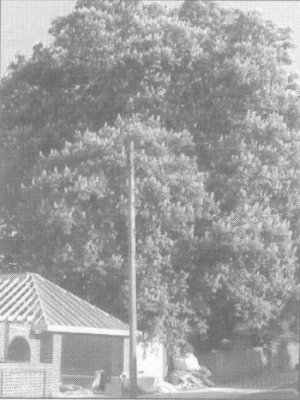
At risk: Chestnut tree, Edgar Road
This fear has been supported by the report in the Hampshire Chronicle that a large 1920s "Lutyens-style family house", described by the selling agent as being "one of the finest homes in the city", is "expected to make £1 m, with some of its land going for a further £5m" and that "the city council has indicated that up to 16 homes could be built on the land". This is not in a conservation area, and as the planners will therefore have little control over the design of the new dwellings it is worrying what effect these will have on the setting of this important Lutyens-style house and the neighbourhood in general, bearing in mind the other undistinguished developments of this size around the suburbs of Winchester.
With the profits indicated by these developments, unless our City Fathers and the Planners are prepared to take a very firm line with avaricious developers, there seems little hope of preserving the elements that are essential for retaining the character of Winchester.
